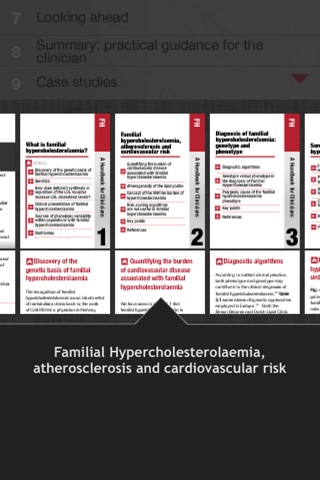
Targeting Familial Hypercholesterolaemia
Targeting Familial Hypercholesterolaemia: EAS Guidance for Detection & Management - Børge G. Nordestgaard, John Chapman, Alberico L.Catapano, Steve E Humphries
Familial hypercholesterolaemia (FH) – inherited high cholesterol – is one of the most common genetic conditions, affecting about 1 in 200-250 people. FH is characterised by marked hypercholesterolaemia, with low-density lipoprotein (LDL) cholesterol levels in the range of 5-13 mmol/L for heterozygous FH and ≥13 mmol/L for homozygous FH. The great majority of mutations causing FH are in the LDL-receptor (LDLR), although mutations in the genes, APOB, PCSK9 and LDLRAP1, may also induce the FH phenotype. The level of plasma cholesterol varies according to the nature of the underlying mutation, although there is considerable genotypic and phenotypic variation between patients.
If unrecognised and untreated, individuals with FH are at high risk of premature coronary heart disease (CHD) due to the burden of high cholesterol levels. Thus, early diagnosis is an essential gateway to providing evidence-based treatment to ensure that affected individuals lead a healthy normal life. Screening for people with FH is an essential strategy for reducing the burden of atherosclerotic cardiovascular disease associated with this condition. Yet with few exceptions, less than 1% of individuals are identified, and therefore do not receive adequate management of their hypercholesterolaemia and severely elevated cardiovascular risk. Of those patients identified, most do not attain LDL cholesterol goal with currently available treatments.
This handbook, authored by members of the European Atherosclerosis Society (EAS) Consensus Panel on FH, provides an important resource for clinicians. The handbook provides an overview of the clinical presentation, aetiology and prevalence of FH, and discusses the relevance of high lifetime cholesterol burden in untreated FH individuals to high risk for premature coronary disease. The handbook emphasises the importance of detecting FH individuals early so as to intervene and prevent the onset of cardiovascular morbidity and mortality in early adulthood.
The handbook summarises key recommendations from the EAS Consensus Panel statement on FH, covering detection, diagnosis, screening and management of FH. Targeting children and adolescents with FH is key to optimising benefit, given that childhood is the optimum time for differentiating children with FH from unaffected siblings due to the lack of hormonal and dietary influences on LDL C concentration. The handbook also discusses the importance of a strategy for cascading for the family, from the index case. The EAS Consensus Panel recommends cascade screening as the most cost-effective strategy for identifying new cases of FH from the index case.
Novel treatments, including PCSK9 monoclonal antibody therapy, are a focus, given that these offer the potential to markedly improve the management of FH. Finally, the handbook discusses a number of case studies which highlight important issues relating to the management of FH patients.
This handbook will provide a useful ready reference for clinicians likely to be at the forefront of identifying and managing individuals with FH.



